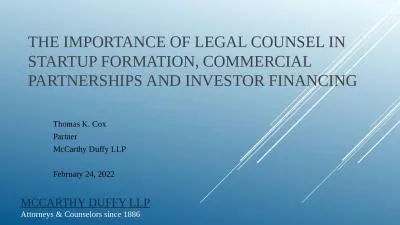PPT-Kevin Duffy
Author : mitsue-stanley | Published Date : 2016-10-15
Chairman The Labour Court Variable and Personalised Pay Determination Systems Industrial Relations Amendment Act 2001as Amended Resolve Conference 2015 Kevin
Presentation Embed Code
Download Presentation
Download Presentation The PPT/PDF document "Kevin Duffy" is the property of its rightful owner. Permission is granted to download and print the materials on this website for personal, non-commercial use only, and to display it on your personal computer provided you do not modify the materials and that you retain all copyright notices contained in the materials. By downloading content from our website, you accept the terms of this agreement.
Kevin Duffy: Transcript
Download Rules Of Document
"Kevin Duffy"The content belongs to its owner. You may download and print it for personal use, without modification, and keep all copyright notices. By downloading, you agree to these terms.
Related Documents














